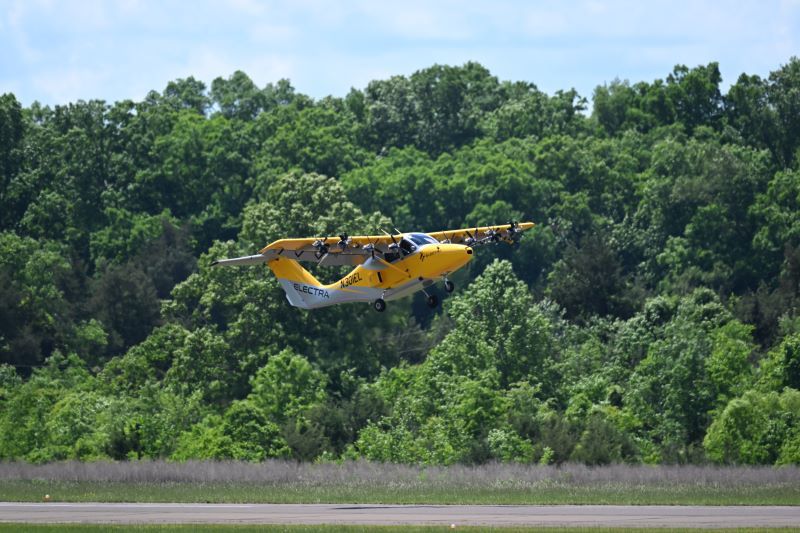Electra’s Goldfinch eSTOL prototype took off using less than 170ft of runway during flight testing earlier this month.
The distance is just over half of the company’s target of 300ft for the nine-seat hybrid-electric short take-off and landing (eSTOL) commercial aircraft it is developing, which will be capable of flying at speeds of 200mph (320km/h) and up to distances of 500 miles (800km). The company is targeting an entry into commercial service under FAA Part 23 regulations for the aircraft in 2028.
For comparison, the Pilatus PC-6 STOL single-engine turboprop, which has one of the shortest minimum take-off and landing distances available on the market currently requires a minimum runway length of 640ft. A single-aisle airliner such as the A320 requires a 6,000ft long runway.
Technology validation
The EL-2 Goldfinch, which first flew in November last year, is a two-seat prototype to demonstrate and validate the technology that Electra’s commercial aircraft will use. Goldfinch is the world’s first aircraft to combine distributed electric propulsion and a blown-lift design to reduce take-off and landing distances.
Electra’s blown-lift concept uses propellers on the leading edge and large flaps at the rear of the wing to blow more incoming air downwards. This enables the aircraft to lift off the ground at slower speeds and use shorter runways.
Goldfinch uses eight electric motors and modified wings from a Cessna 172, while the rest of the airframe is new.
JP Stewart, Electra’s vice president and general manager said, “We’ve proven that our eSTOL aircraft can do what we said it could – operate from spaces shorter than 300ft.
“The aircraft handling at low-speed has been exceptional and is matching our analysis well, building confidence in the predicted capability of the nine-passenger product design.
“We will continue to develop our technologies, including the thrust-by-wire flight control system to allow us to fly even slower on approach and further improve the STOL takeoff and landing performance in the ongoing test campaign.”

The test flights, piloted by Cody Allee, took place through April and May at the Manassas Regional Airport and Warrenton-Fauquier Airport in Virginia, USA. The longest flight lasted 1 hour 43 minutes.
During the campaign, the aircraft took off in less than 170ft and landed in under 114ft ground roll. It reached an altitude of 6,500ft, and flew as slowly as 30mph (50km/h) during take-off and landing.
Data from the flight test program is being used to inform the design of Electra’s commercial eSTOL aircraft.
Electra’s aircraft will compete with fixed-wing aircraft of less than 20 seats, such as Beavers, Otters, King Airs, Cessna Caravans and Pilatus PC-12s. It also believes its aircraft can serve locations currently only catered to by helicopters, inside urban areas for example.
The company envisions several different variant aircrafts for the concept. It has also been working with the US Army and US Air Force to develop a full-scale pre-production prototype eSTOL with funding including US$85 million of funding from the AFWERX Agility Prime Program. The aircraft could be used for military logistics in contested environments.




